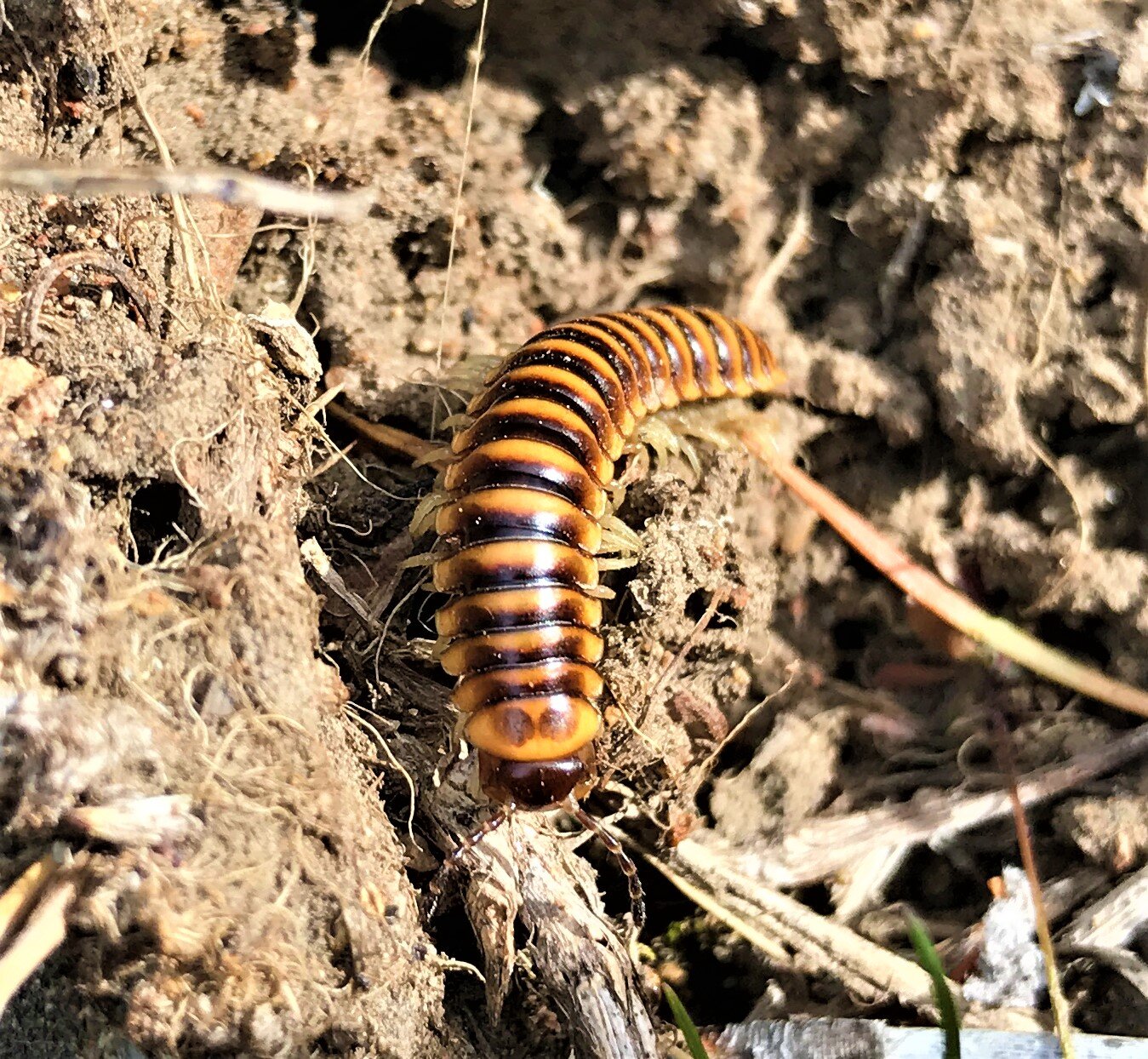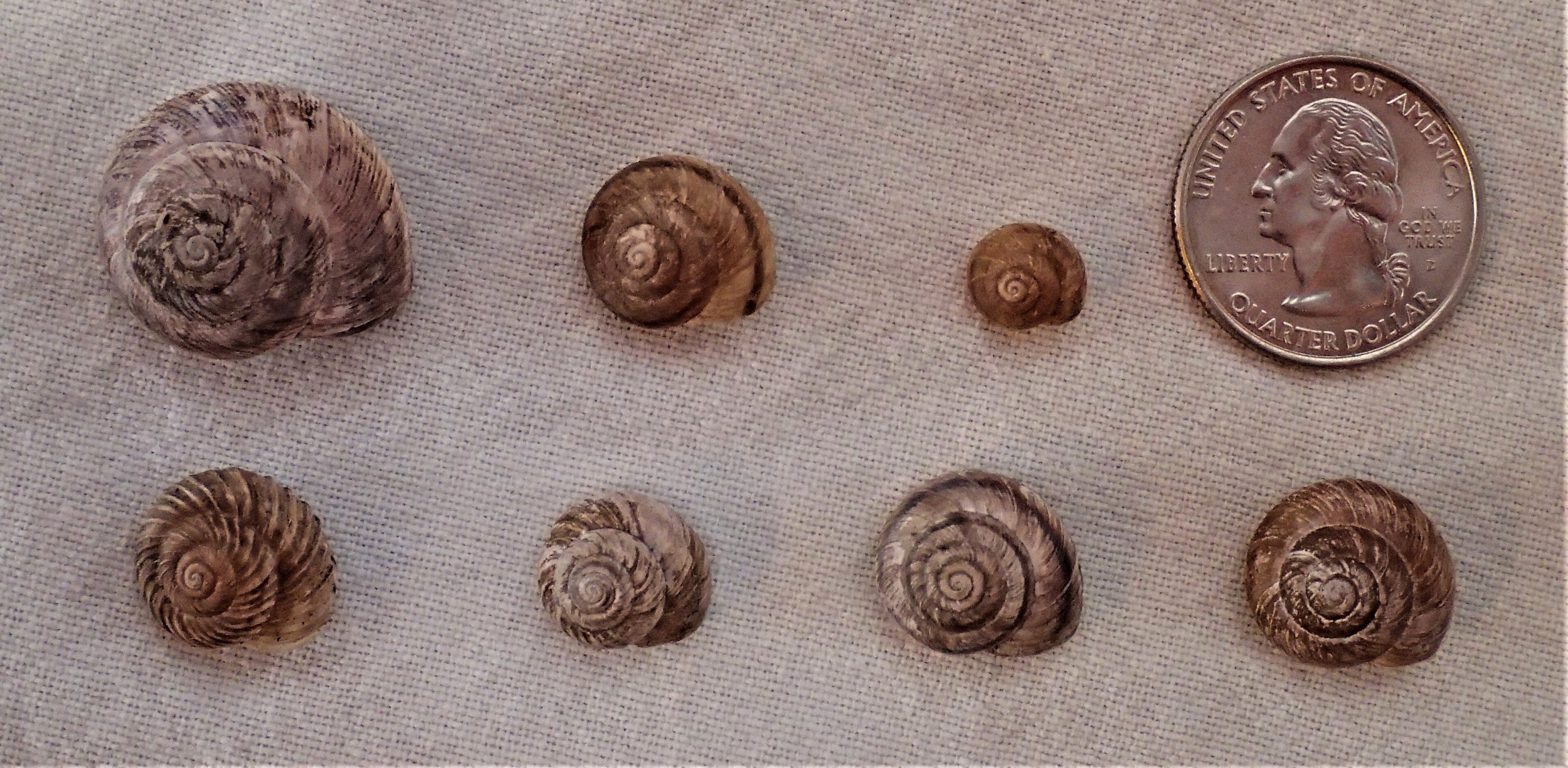
Central Washington
Mountainsnails
Species taxonomic evaluation, population structure, and distribution of US Fish & Wildlife Service priority Oreohelix in Washington
What’s a Mountainsnail?
Mountainsnails are air breathing land snails that belong to the genus Oreohelix. All 80 or so species are native to western North America. Unlike many land snails, they typically live in very dry habitats. Living in dry areas means these snails need to adapt to conserve moisture. One way we think they do that by developing ‘ribs’ and other sculpting on their shells. This sculpting has led to some very different looking snails in a small area, some of which, have been proposed to be recognized as new species.
What did we need to know?
The Chelan Mountainsnail was petitioned to be listed under the Endangered Species Act and the US Fish & Wildlife Service is completing a Species Status Assessment in 2022. However, Chelan Mountainsnails have never been described in the scientific literature. The first step to completing the SSA is to determine if the Chelan Mountainsnail is a distinct species from six other ‘forms’ found in the study area. We will also evaluate population structure and distribution of mountainsnails in central Washington.
How did we find out?
That’s the fun part! With funding from the US Fish and Wildlife Service Candidate Conservation Fund we first collected specimens of each of the seven mountain snail ‘forms’. Then we will used molecular techniques to determine if any are genetically distinct enough to be considered separate species.
Here’s what we learned!
We found substantial population structure, inbreeding, and morphological plasticity among the seven ‘forms’. However, we did not observe any concordant signals of morphological and genetic differentiation that would suggest a new species within the O. strigosa complex. We conclude that the seven morphological forms we examined (Aspen, Chelan, Entiat, Hoder’s, Mad River, Ranne’s, and Yakima) are members of what has hitherto been called Oreohelix strigosa strigosa or the Rocky Mountainsnail.
Although there is not a new species to describe, we did find two distinct populations withing the Entiat River drainage. Mountainsnails provide essential ecosystem functions including decomposition, nutrient transfer, and disease vectoring. As they are one of the only large snails occurring in our study area, we recommend future work focus on monitoring and conservation of these distinct and important populations.
Seven morphological Moutainsnail (Oreohelix strigosa strigosa) forms examined in this study. Left to right starting at top left: Aspen, Chelan, Entiat, Hoder’s, Ranne’s, Mad River, Yakima.
This map shows the different populations we identified. We recommend the Mad River (Green) and Dick Mesa (Red) populations be conservation priorities.
This phylogenetic network shows how individuals cluster together in populations. Colors correspond to the map above and figure on the right.
Principle component analysis which shows the Mad River (green) and Dick Mesa (red) populations are distinct but closely related. Colors correspond to the map above and figure on the left.

Project partners Andrew Rankin (left) and Mason Linscott (right).

Lacy Robinson with Mad River form snails.

Aspen form mountainsnail.

Mountainsnails can be associated with arrowleaf balsamroot.

Mountainsnails are often found in talus slopes.

Mason searches for snails.

Lacy, Mason, and Andrew search for the Ranne's form.

Entiat form mountainsnails.

Western Skink

Lacy searches under arrowleaf balsamroot for snails.

Western Fence Lizard

Millipede from the Xystodesmidae family.






